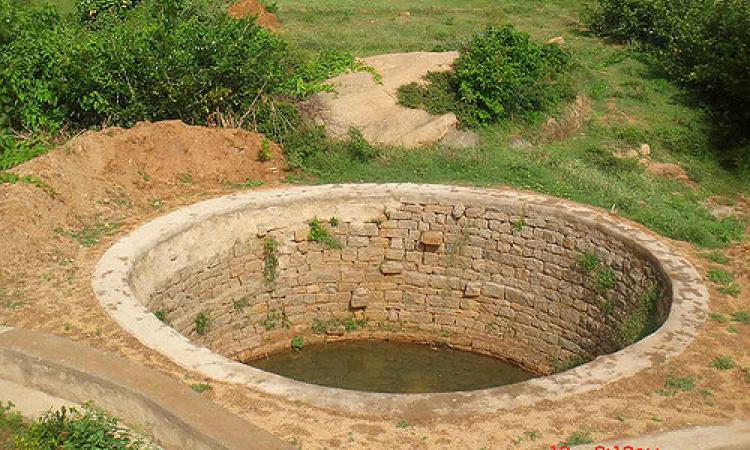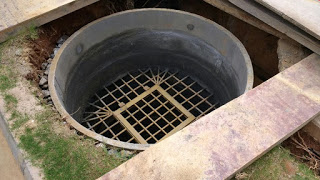
The problem of Bengaluru’s water is well known. The demand for water tankers skyrockets during the summer months, when municipal and borewell water supplies run dry, and many of the city’s lakes, actually man-made tanks, lie neglected and polluted. While legislation on rainwater harvesting and groundwater recharge has been passed, its implementation on the ground has not been a complete success.
In this context, Bengaluru-based Biome Environmental Trust and Pune-based ACWADAM (Advanced Center for Water Resources Development and Management) undertook a participatory aquifer mapping project with support from WIPRO over a period of three years to better understand a critical water resource for Bengaluru - groundwater. This partnership was developed to bring focus to the increasing use and dependence of urban areas on groundwater in the Indian context, and to address the lack of a deeper understanding of urban groundwater and its linkages with other urban processes1. As the project came to a close, a workshop was held at WIPRO to share some of the key outcomes, learnings and outputs with Bengaluru’s vibrant participating community and its institutions of governance.
The project focussed on the Sarjapur area of Bengaluru, most of which does not receive municipal water supply. The project looked at eight micro watersheds in the upper Ponnaiyer watershed, covering an approximate area of 33 square kilometres, containing about 15 lakes and 150 borewells. Sarjapur is also part urban and part rural, so some portions fall under panchayats while others fall under the jurisdiction of the municipal authority, the BBMP (Bruhat Bengaluru Mahanagara Palike). Data from the project was mapped on Mapunity. Three main clusters were considered for the study - Adarsh Palm Retreat, Rainbow Drive and Kaikondrahalli Lake.
Citizens join hands to map groundwater
Many different stakeholder groups were consulted and involved in mapping the groundwater of Sarjapur. From resident welfare associations of gated communities like Adarsh
 Palm Retreat and Rainbow Drive, to builders, businesses, fishermen, well diggers and plumbers, the diversity of stakeholders enriched the outcome of the project. It also included many different groups of people in the discourse on groundwater in Bengaluru.
Palm Retreat and Rainbow Drive, to builders, businesses, fishermen, well diggers and plumbers, the diversity of stakeholders enriched the outcome of the project. It also included many different groups of people in the discourse on groundwater in Bengaluru.
The aquifer was mapped using existing open wells and borewells in the study area. Rainbow Drive, for instance, put a sensor in one of their borewells to measure the water level over the span of one year.
Rainbow Drive has created a success story for itself by becoming completely independent of water tankers and becoming water sufficient not only through adopting rainwater harvesting, pricing and metering but also by banning private borewells, managing sewage and understanding water usage in the community. This gated community reduced water demand from 250 litres per capita per day (LPCD) to 120 to 150 LPCD through these interventions. This is an excellent example of user behaviour that enables better groundwater management.
Adarsh Palm Retreat found that while their basement was flooding during the monsoon, they were still using tankers. The basement flooding every monsoon was a visual indicator that the shallow groundwater aquifer, just 10 metres below the surface of the ground, was filled with water - an indicator of a hidden resource in plain sight! This shallow aquifer could very well be tapped to provide water to Adarsh Palm Retreat, rather than buying tanker water.

A solution was devised by Biome in collaboration with the residents' welfare association of Adarsh Palm Retreat, to set up a network of withdrawal and recharge wells on the property. Water is extracted from the withdrawal wells and transported to a treatment plant, while recharge wells are filled with harvested rainwater run off.
It is also interesting and useful to learn that a recharge well is usually about three feet in diameter and about 25 to 30 feet in depth. Any recharge that happens in the top part of the soil, is generally lost to evapotranspiration, whereas deeper groundwater recharge tends to stay in the ground and benefit the shallow aquifer. So a recharge well helps invaluably in recharging the shallow groundwater aquifer close to the soil surface.
The link between lakes and groundwater
Kaikondrahalli Lake in Sarjapur was revived through a citizen effort and was one of Bangalore’s first lake rejuvenation efforts by citizens. The results are bearing fruit in more ways than one, as this participatory groundwater mapping project has unearthed.
Several open wells were discovered around Kaikondrahalli Lake, also in Sarjapur, which were actually used for irrigation when the area was initially filled with guava fields. It was found that the lake was recharging the open wells, which in turn were tapping the shallow aquifer, and the shallow aquifer was also being recharged by the lake.
Open wells near lakes tend to have water because the lake contributes to shallow aquifer recharge. These wells are good options as a source of water; however, the quality of water in these open well depends on the lake's water quality.
The project also found that lakes do not seem to recharge deep borewells in a three-to-five-year time frame. Rejuvenation of lakes did not necessarily result in high yields from neighbouring borewells.2 This indicates that lakes do not necessarily recharge the deep groundwater aquifer, at least in urban contexts.
Treated wastewater can also be used to keep lakes full and recharged which, in turn, benefits the shallow groundwater aquifer. Jakkur Lake in Bangalore is a good example of this. Here, the city's water utility, the BWSSB (Bangalore Water Supply and Sewerage Board) operates a wastewater treatment plant upstream of the lake, which releases treated wastewater into the lake, ensuring that it is brimming with water through the year. A vibrant community of fishermen and citizens keep this ecosystem alive and enjoy the benefits of an urban lake ecosystem in the heart of the city. The lake also recharges open wells around its periphery, similar to Kaikondrahalli Lake.
Many inspiring stories of citizen participation have emerged from this three-year project. Learn more about the initiative, and how you can take action in your community, here. You can also download a detailed report of the project here.
For more information, or to contribute a story of your own, write to water@biome-solutions.com
Footnotes: